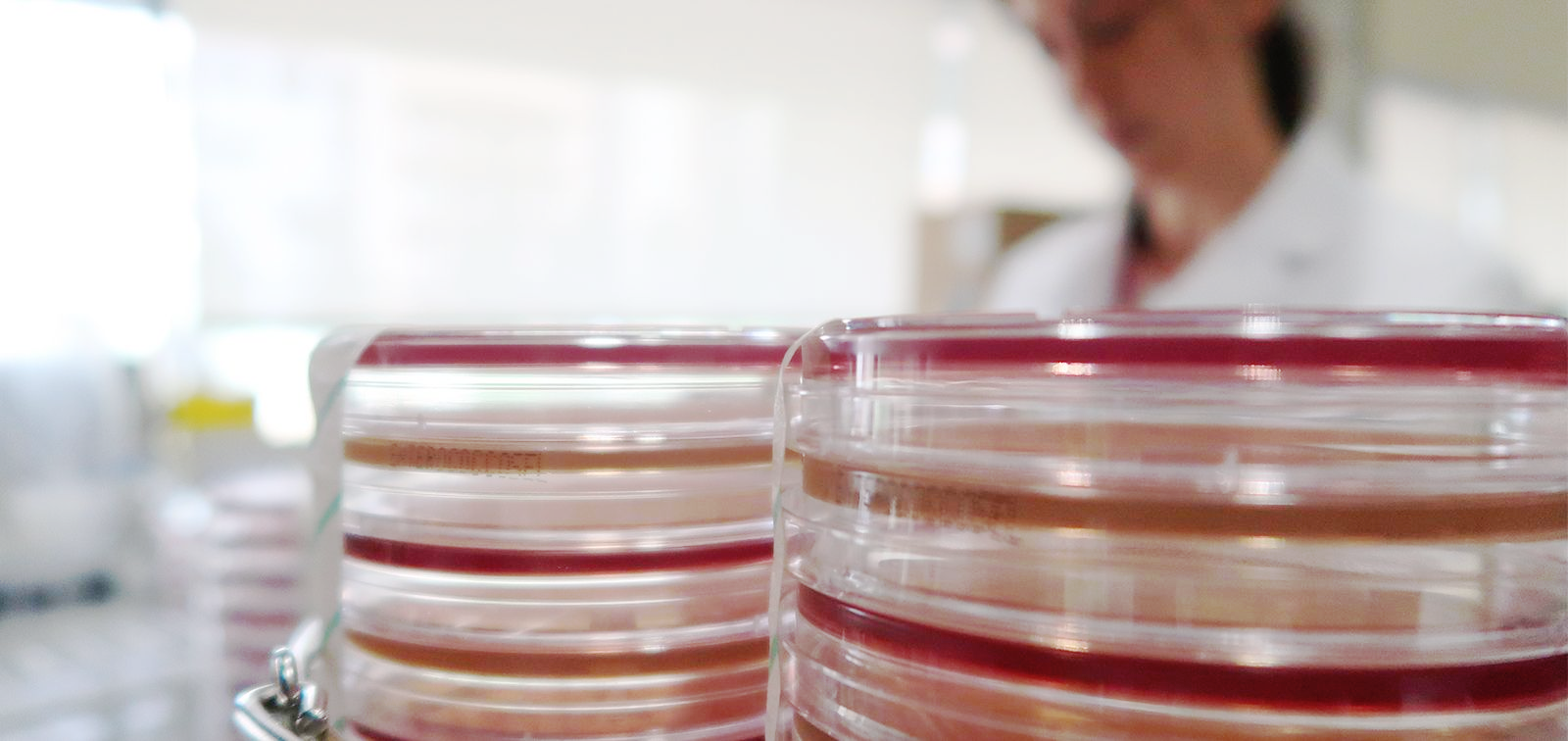2G Color Plates
2nd Generation Color Agar Plates to Diagnose MDR-Tuberculosis: a Prospective Pilot Study

- Duración
- 2020 - 2022
- Coordinador
- Alberto García-Basteiro
- Financiadores
- National Institutes of Health (NIH)
Tuberculosis (TB) is now the leading infectious disease cause of death worldwide, killing one person every 21 seconds. The growing burden of detected rifampicin-resistant (RR) and multidrug-resistant (MDR)-TB is hindering TB prevention, surveillance and care.
Extensively drug resistant (XDR)-TB is a severe form of MDR-TB that involves MDR M. tuberculosis (Mtb) strains that are additionally resistant to any fluoroquinolone (FQ) and a second-line injectable drug (kanamycin, amikacin, or capreomycin) (2) Mtb strains causing extreme drug resistant (XXDR)-TB are resistant to all 1st and 2nd line TB drugs (1,2). Currently, a person with drug resistant TB goes into a short drug regimen with 7 drugs on a daily basis for 9 months, regardless of age or HIV status (3).
Under programmatic conditions in endemic countries, sputum is collected and cultured every month after drug resistant TB treatment initiation, to further perform the drug susceptibility test to determine if the patient is responding or not to the treatment. In many endemic areas where line probe assays are not available (urban and rural), this process might take between 42-60 days (1).
We propose to use an agar-layer based platform that can shorten this period to a maximum of 14 days. Although our agar-layer test is not a molecular based assay as some of the PCR-based instruments currently being used to diagnose drug susceptible and rifampicin resistant TB, our test can diagnose phenotypic resistance for 11 TB drugs, thus making it unique for this purpose.
This novel test is designed to be a relatively fast, easy-to-use, and inexpensive drug susceptibility testing (DST) for drug-resistant TB in high TB incidence areas. This 2G Color Plate test could be useful for early TB resistance detection in MDR-TB individuals, and importantly, for treatment monitoring. We will compare the performance of this test against Xpert MTB/RIF Ultra, Line probe assays (LPA) and BACTEC MGIT drug susceptibility testing (DST).
Objectives
- Objective 1. To evaluate the accuracy of the 2G Color Plate in diagnosing drug resistant TB.
- Objective 2. Assess the usefulness and turn around time of the 2G Color Plate in monitoring if a patient infected with drug resistant TB is responding to the treatment.
In Objective 1, sputum will be collected from 110 pulmonary TB patients, 60 rifampicin susceptible (RS) and 50 rifampicin resistant (RR) according to Xpert MTB/RIF Ultra testing performed prior treatment initiation. We will determine the sensitivity and specificity, and the turnaround time of the results provided by the 2G Color plate for detection of drug resistance (using BACTEC MGIT DST as gold standard). We will also compare these diagnostic performance indicators to those of LPA. We will also estimate sensitivity for 2G Color Plate for detection of M tuberculosis (gold standard: BACTEC MGIT)
In Objective 2, sputum samples will be collected from 50 RR (RR TB patients identified in Aim 1) and 60 RS pulmonary TB patients currently under drug-resistant TB therapy to monitor if these TB patients are responding to their treatment, and compare our results with BACTEC MGIT based DST. We will conduct testing during the first year of treatment, as per national guidelines.
Partners
- Centro de Investigação em Saúde de Manhiça (CISM)
- Barcelona Institute for Global Health (ISGlobal)
- Texas Biomedical Research Institute
Duration
The estimated duration of the study will be 2 years (2020-2022) from the time the first participant signs the informed consent until the last participant completes a 6-month follow-up period.
Funding
NIH funded study
Overall Grant Awarded: 214,920 USD
Contact
Nuestro equipo
Coordinator
-
 Alberto García-Basteiro Associate Research Professor
Alberto García-Basteiro Associate Research Professor
ISGlobal Team
-
Belén Saavedra Cervera
Otros proyectos
Ver proyectos pasadosCOMBACTE
Combatiendo la Resistencia Bacteriana en Europa
GAMA
Development of Novel Gastrointestinal Biomarkers for Use in HIV Incidence Determination in a Sub-Saharan African Setting
Evaluación de estrategias para la erradicación de la enfermedad del Pian
Erradicación del Pian
Novel Marine Biomolecules against Biofilm (NoMorFilm)
Application to medical devices
COMBACTE-CARE
Combatting Bacterial Resistance in Europe - Carbapenem Resistance
MAMAH
Improving Maternal and Infant Health by reducing malaria risks in African women: evaluation of the safety and efficacy of dihydroartemisinin-piperaquine for intermittent preventive treatment of malaria in HIV-infected pregnant women
INTE-AFRICA
Integrating and decentralizing diabetes and hypertension services in Africa
ICARIA
Improving Care through Azithromycin Research for Infants in Africa
PreFIT
Predicting the Future: Incipient Tuberculosis
Predicting the Future: Incipient Tuberculosis
Encuesta serológica Cendea de Cizur
Cendea de Cizur
Projecte de Recerca en Resposta Immunitària i Epidemiologia de Malalties Infeccioses
Conèixer la propagació. Entendre la protecció
ANTICOV
Large Clinical Trial in Africa on the Treatment of Mild Cases of COVID-19
Stool4TB
Evaluating a new stool based qPCR for diagnosis of tuberculosis in children and people living with HIV
TB-RECONNECT
Reconnecting Transmission to Global Tuberculosis Control by Mapping Pathogen Transmission Events to Host Infection Status
SToolNIH
Quantifiable stool-based TB PCR to Improve Diagnostics and Treatment Monitoring
ALIA - Las ciudades y la salud
Planificación urbana, medio ambiente y salud | Clima y salud | Resistencias Antimicrobianas
END-VOC
ENDing COVID-19 Variants Of concern through Cohort studies (END-VOC)
TwinAir
Digital Twins Enabled Indoor Air Quality Management for Healthy Living
Estudio de la propagación de bacterias y genes de resistencia a los antibióticos en el ciclo integral del agua, en el área metropolitana de Barcelona
Propagación de la resistencia en aguas
Nuevos complejos de oro (III) frente a bacterias multirresistentes
Project Code: DTS21/00004
Desarrollo de dos nuevas estrategias terapéuticas (inhibidores de bombas de expulsion y ARN antisentido) activos frente a bacterias mutliresistentes
Más allá de la supresión vírica del VIH: un cuarto noventa para mejorar la salud de personas viviendo con el VIH en España
Project Code: PI20/01654
ENDÈMIC
Community knowledge generation through scientific culture, urban ecology and art
EpiGen
Building Scalable Pathogen Genomic Epidemiology in Ethiopia
Hepatitis C Free Baleares
Eliminating hepatitis C on the Balearic Islands (Mallorca, Menorca and Ibiza): a study in governmental and non-governmental addiction service centres, a mobile methadone unit and a prison to test and link people who use drugs to HCV care.




